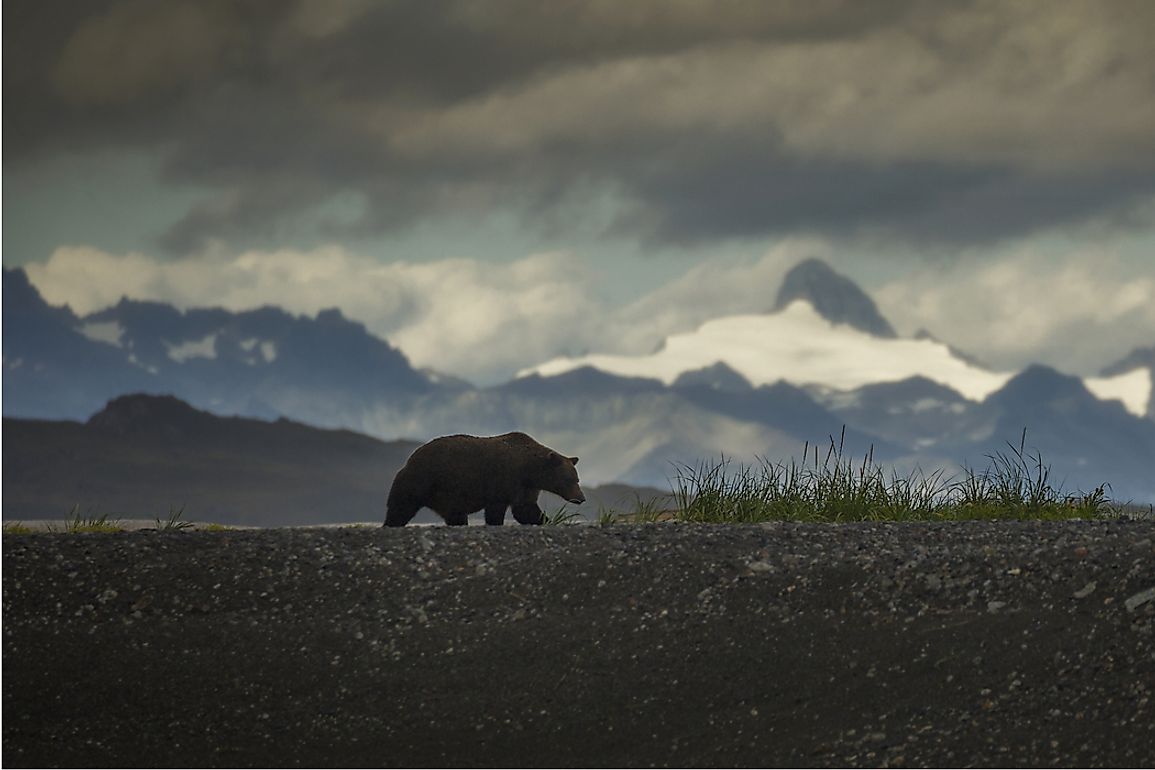Where Do Grizzly Bears Live?

North American brown bears (Ursus arctos) have grey and golden tips in their hair, which in turn gives them a ‘grizzled’ aspect, hence the name grizzly bears. Grizzly bears inhabit the northwestern region of North America. Grizzly bears now inhabit about half of their historical range. The grizzly bear was once seen to populate the entire western coast of North America, from Alaska to Mexico. However, today the grizzly bear is found predominately in Alaska and western Canada. The Canadian grizzly bear population of 25,000 occupy British Columbia, Alberta, northern Manitoba, the Yukon, and the Northwest Territories. Alaska has the largest population with 30,000 grizzly bears, followed by British Columbia with a population of 15,000. Smaller populations are also found in Idaho (100), Wyoming (600), and Montana (800). A further 1,500 grizzly bears can be found in the lower US states.
Ecological Niche
These bears inhabit and use different kinds of habitats. During winter, they hide in their dens in order to cope with the extremely low temperatures. As a preparation for denning, grizzly bears consume large chunks of food during summer and fall. During the denning period, the bears neither urinate nor defecate. They utilize the food consumed during summer and the fall since there is no eating during the denning period. The bears dig up their dens on elevated slopes. After maturing, male grizzlies move far off to establish their own territories. On the other hand, female grizzlies establish their territories not far away from their mother.
Reproduction
Female grizzlies give birth during the denning period. Of all mammals, grizzly bears have the slowest reproductive rate. The females attain sexual maturity at age five. The mating season among grizzly bears falls between May and July. The female bodies will however permit egg implantation in the months of October or November. The period in between breeding and egg implantation may allow for miscarriage as well. A female grizzly, which has not fed on enough nutrients and calories, may fail to conceive. The cubs feed on milk from their mother and remain under care and tutelage for a period of two to three years. A female grizzly bear with cubs can easily attack other species including humans in its endeavor to protect its cubs. The female also wards off male grizzlies when with cubs since male grizzly bears pose a danger to cubs.
Diet
Grizzly bears are omnivorous. These species have a varied diet and may feed on among other things grass, fish, roots, fungi, deer, and elk. It is also common to find grizzly bears scavenging for dead animals. Despite grizzly bears being solitary animals, it is common to see them feeding in groups in places where there is plenty of food.
Importance to the Ecosystem
In an effort to conserve grizzly bears in their habitats, a majority of other species benefit from the conservation measures. This earns grizzly bears the name ‘umbrella species.’ These species help to distribute seeds by eating fruits and later defecating viable seeds. They also keep in check other herbivores thereby ensuring a balance in the ecosystem. These species also improve nitrogen levels in the upper layer of soil when they dig up for food. Grizzly bears have long claws, averaging two to four inches long. The species also have a characteristic hump on their shoulders. These two features give the grizzly bears a powerful digging ability.











